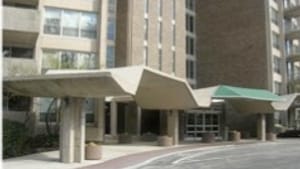Stay in the Loop
BSR publishes on a weekly schedule, with an email newsletter every Wednesday and Thursday morning. There’s no paywall, and subscribing is always free.
You've got to be carefully taught: Wynnefield before the whites fled
Fear and integration in Wynnefield, c. 1970

It was dark when the man climbed in through our den window, came up the stairs and into my room. I awakened on the floor. I remember hands in my mouth, around my neck, as if trying to strangle me. I was six years old.
Then I remember my grandmother talking to him, calmly, telling him to please leave the boy alone. For some reason he did. My parents were out but our housekeeper, coming up from the basement, called the police as well as a neighbor, who promptly sat on the intruder.
The man was drunk and mentally unstable, and I had to testify against him in a City Hall courtroom. But first came the dreams"“ wake-up-screaming dreams that were the same night after night: the Russians invading, shooting my parents, Khrushchev himself chasing me down Drexel Road.
A safe place
It was 1959 and break-ins were not supposed to happen in Wynnefield. Scary things might be going on in the larger world and even in Philadelphia, but Wynnefield was separate, Jewish, safe. Kids walked unaccompanied to school and synagogue, and came and went from each other's homes, like some small-town idyll.
Now my parents went the massive-dog route"“ German shepherds, bull mastiffs"“ a succession of big barkers and menacing walkers (albeit marshmallows to us) to ward off bad guys. But I was fine, once the dreams passed. I was a kid among kids and our parents' fears weren't ours. The break-in was random, a freak occurrence, quickly passing into the realm of local lore"“ the narrative of the block as told by its young historians"“ along with such later incidents as our burst water main and a power line that sparked fireworks.
The intruder, by the way, was white.
The fears that followed"“ afflicting Wynnefield homeowners deep into the 1960s and early '70s"“ were something else. Once, the only blacks who walked by were maids heading to and from work. Now my father rose from the dinner table to stand sentry in the picture window, watching black teenagers swagger down the street.
The wave was coming closer. Parents instructed kids as to where we could and couldn't ride our bikes, which we of course ignored.
Parents vs. kids
Because here's the reality: The integration of Wynnefield was one thing to parents, quite another to kids. Nothing against growing up in a Jewish neighborhood (well, I hated Hebrew school, but that's another story), but the place got more interesting, more vital, when blacks moved in. The black girls were warm and flirty. The driveway basketball games improved. We actually saw people go to church. The black dads drove off in the morning just like the Jewish fathers, and they were every bit as worried about the safety of their kids.
All in all, things seemed less tribal, more normal. But of course they didn't last.
We were driving home from school one wintry day, three friends and I, when police pulled us over. They questioned the one black guy among us, asked where he'd been, if he carried a briefcase. "School" and "No" were the answers, and they let us go. Only when we came to our street, crawling with cops, did we discover what was going on: My neighbor, a white doctor, had been murdered by a black man who'd gained entry to his house posing as a door-to-door salesman.
And here's what I learned: Get attacked at home by a white guy, as I was, and life didn't change much. Get attacked by a black man, admittedly years later and with lethal force, and everything changed, or at least was hastened on its way.
White flight
Now the news was full of what-happened-to-Wynnefield stories. White flight was in the air, the real estate brokers' flyers appearing regularly on our doorknob. I left soon for college, returning only for a couple of summers, but by the mid-1970s my parents had moved and the neighbors followed.
It's easy to judge, I know. The white residents who left were mostly of a certain age, with kids grown and gone, and many would probably have downsized soon anyway. But they went in a hurry, sold their homes cheap, out of fear"“ fear for their safety, for their investments in big lovely homes whose value, they were told, would only keep dropping.
Few intrepid or idealistic white families took their place. And in the process an all-too-brief era, when white and black kids played easily together in Wynnefield, faded away.
Four decades have passed since I lived full-time in Philadelphia. On visits back I return reflexively to the old neighborhood. It still looks like a fine place to grow up. But it could have been something more: a model. That's the local lore I'd love to pass on.♦
To read responses, click here.
Then I remember my grandmother talking to him, calmly, telling him to please leave the boy alone. For some reason he did. My parents were out but our housekeeper, coming up from the basement, called the police as well as a neighbor, who promptly sat on the intruder.
The man was drunk and mentally unstable, and I had to testify against him in a City Hall courtroom. But first came the dreams"“ wake-up-screaming dreams that were the same night after night: the Russians invading, shooting my parents, Khrushchev himself chasing me down Drexel Road.
A safe place
It was 1959 and break-ins were not supposed to happen in Wynnefield. Scary things might be going on in the larger world and even in Philadelphia, but Wynnefield was separate, Jewish, safe. Kids walked unaccompanied to school and synagogue, and came and went from each other's homes, like some small-town idyll.
Now my parents went the massive-dog route"“ German shepherds, bull mastiffs"“ a succession of big barkers and menacing walkers (albeit marshmallows to us) to ward off bad guys. But I was fine, once the dreams passed. I was a kid among kids and our parents' fears weren't ours. The break-in was random, a freak occurrence, quickly passing into the realm of local lore"“ the narrative of the block as told by its young historians"“ along with such later incidents as our burst water main and a power line that sparked fireworks.
The intruder, by the way, was white.
The fears that followed"“ afflicting Wynnefield homeowners deep into the 1960s and early '70s"“ were something else. Once, the only blacks who walked by were maids heading to and from work. Now my father rose from the dinner table to stand sentry in the picture window, watching black teenagers swagger down the street.
The wave was coming closer. Parents instructed kids as to where we could and couldn't ride our bikes, which we of course ignored.
Parents vs. kids
Because here's the reality: The integration of Wynnefield was one thing to parents, quite another to kids. Nothing against growing up in a Jewish neighborhood (well, I hated Hebrew school, but that's another story), but the place got more interesting, more vital, when blacks moved in. The black girls were warm and flirty. The driveway basketball games improved. We actually saw people go to church. The black dads drove off in the morning just like the Jewish fathers, and they were every bit as worried about the safety of their kids.
All in all, things seemed less tribal, more normal. But of course they didn't last.
We were driving home from school one wintry day, three friends and I, when police pulled us over. They questioned the one black guy among us, asked where he'd been, if he carried a briefcase. "School" and "No" were the answers, and they let us go. Only when we came to our street, crawling with cops, did we discover what was going on: My neighbor, a white doctor, had been murdered by a black man who'd gained entry to his house posing as a door-to-door salesman.
And here's what I learned: Get attacked at home by a white guy, as I was, and life didn't change much. Get attacked by a black man, admittedly years later and with lethal force, and everything changed, or at least was hastened on its way.
White flight
Now the news was full of what-happened-to-Wynnefield stories. White flight was in the air, the real estate brokers' flyers appearing regularly on our doorknob. I left soon for college, returning only for a couple of summers, but by the mid-1970s my parents had moved and the neighbors followed.
It's easy to judge, I know. The white residents who left were mostly of a certain age, with kids grown and gone, and many would probably have downsized soon anyway. But they went in a hurry, sold their homes cheap, out of fear"“ fear for their safety, for their investments in big lovely homes whose value, they were told, would only keep dropping.
Few intrepid or idealistic white families took their place. And in the process an all-too-brief era, when white and black kids played easily together in Wynnefield, faded away.
Four decades have passed since I lived full-time in Philadelphia. On visits back I return reflexively to the old neighborhood. It still looks like a fine place to grow up. But it could have been something more: a model. That's the local lore I'd love to pass on.♦
To read responses, click here.
Sign up for our newsletter
All of the week's new articles, all in one place. Sign up for the free weekly BSR newsletters, and don't miss a conversation.

 Robert P. Levin
Robert P. Levin